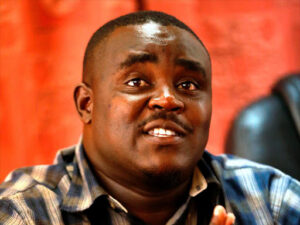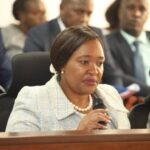Raila Odinga called off his demonstrations due to President William Ruto’s clever tactics. Ruto has taken advantage of the ceasefire to rebrand himself for the 2027 polls. He is also using the opportunity to divide and destroy the Azimio Brigade, leaving it in tatters and smithereens. Raila had planned to stage a massive protest, but Ruto outwitted him.
Initially, Ruto’s regime was negatively impacted by the demonstrations both locally and internationally. This led to government officials having to eat humble pie and stop chest-thumping and spitting venom at the opposition.
Ruto, being a shrewd schemer, isolated Raila internationally during the demonstrations. He convinced the African Union and European countries to release a statement denouncing Raila’s demonstrations and stating that Ruto’s presidency was legitimately validated by the Supreme Court.
According to Weekly Citizen, talks between Ruto and Raila resulted in the president’s side pushing for recognition of Ruto’s presidency and the formation of a strong opposition. Raila called off the demonstrations soon after.
Government officials who were subdued and cornered during the demonstrations are now radiating a sunny mood, while those in opposition wallow in a foul mood and attempt to save face by doing damage control.
Raila was forced to visit Kenyatta National Hospital and Mbagathi Hospital in Nairobi to see those who were shot by police after Azimio was accused of pushing for political reforms instead of lowering the price of food.
It all began when United States Senator Christopher Coons called Raila to organise a video conference for former President Uhuru Kenyatta, Ruto, and the ODM leader.
The America president, Joe Biden, gave his blessings for a live video conference between the senator, the Kenyan president Uhuru, his deputy Ruto, and Raila, who was at his Karen residence. Coons called Raila before he joined his Azimio colleagues for a church service at AIPCA Ruiru.
The senator had already connected the three for the video conference, and Raila informed his colleagues of the developments. Earlier, Coons had notified Ruto that he would organize a video conference that would feature him, Biden, and Raila.
The US senator kept Raila abreast of the developments, with his concern being Azimio colleagues. Uhuru and Gideon Moi were all aware of the political developments. The Azimio leaders were scheduled to attend different church services within Ruiru town and later converge to address area residents.
During the video conference, Raila accused Ruto of manipulating the selection process for new Independent Electoral and Boundaries Commission commissioners. He demanded the halting of their recruitment, claiming that President Uhuru engineered amendments to the law to influence the hiring of commissioners for the 2027 polls.
Ruto defended his decision to declare the IEBC commission jobs vacant, arguing his hands were tied by the law made during the handshake government. Raila also mentioned other grievances, such as the high cost of living and Ruto’s failure to fulfill election pledges.
Insiders revealed that Ruto was told to hold talks with Raila regarding the composition of the electoral body. They agreed that Raila’s team had a right to picket as it is protected in the Kenyan Constitution and universally recognized.
Later, Ruto announced that he had agreed to hold talks with Raila on the reconstitution of the IEBC, proposing a bipartisan consultation in parliament.
The president made the remarks accompanied by deputy president Rigathi Gachagua. Coons jetted out of the country after he had accomplished his mission of stopping the Azimio demonstrations.
Last week, Wandayi issued a statement criticizing the government’s delay in paying its workers, including MPs.
He demanded that parliament conduct an inquiry into the financial and economic crisis in Kenya. Wandayi also questioned the credibility of individuals appointed to key government institutions, suggesting an inquiry should be undertaken before a collapse similar to other African countries.
He further demanded talks on finding out why counties have not received devolved funds from the National Treasury for four months.
While Raila attempted to control the damage, Kenya Kwanza leaders followed Ruto’s lead and portrayed him as a selfish and ineffective leader.
Prime Cabinet Secretary Musalia Mudavadi reiterated that Azimio demands must follow parliamentary procedures and meet all constitutional requirements to be legally binding.
He also criticized Raila for being bloodthirsty, blaming him for the loss of lives and destruction of property during Azimio demonstrations.

In making his statement, Malala conveyed a strong message that UDA would stand by its principles and values, which were anchored in the constitution. He emphasized that the party would not compromise on its position, regardless of the pressure exerted on them.
Overall, Malala’s remarks were a clear indication that UDA was determined to protect its interests and ensure that the political process adhered to the rule of law. His comments served as a warning to those who might attempt to undermine the party’s values or subvert the democratic process.
According to insiders, Ruto challenged Raila to agree to a parliament-led initiative or wait for the 2027 polls. Ruto made this statement in Kwale county, saying that talks should not be held outside the law and that MPs should hold bipartisan talks in parliament.
The president, on the other hand, warned that he would not be held to ransom and launched development projects while crisscrossing the country to rebrand himself as a hard worker.
As part of a damage control exercise, Raila listed eight terms of reference during the Azimio parliamentary group meeting at Stoni Athi Resort in Machakos county.
He said that his side would advance these terms at the talks, which should be concluded within 30 days of the establishment of the joint taskforce. It was at this meeting that Azimio unveiled its seven-member team to negotiate with Kenya Kwanza.
The members included ODM secretary-general Edwin Sifuna, senate minority whip Ledama Ole Kina, deputy minority leader Enoch Wambua, MPs Otiende Amollo (Rarieda), David Pkosing (Pokot South), Millie Odhiambo (Suba North), and Amina Mnyanzi (Malindi).

The president was aware that divisions would arise within Azimio once the seven MPs were chosen. A day after the team was introduced, Babu Owino, the Embakasi East MP, disowned it, claiming that the team should have included youths since they are the ones who are killed and maimed.
Kileleshwa MCA Robert Alai criticized the team, saying that MCAs should have been involved. The president has named his seven-member team this week, and he did not only choose hardliners but also included former members of Azimio as he insists that the talks be held and concluded by parliamentarians.
One of the Americans who supported Ruto for presidency in the 2022 election is Coons. Coons, who is known for his keen interest in Kenya’s political affairs, is the senator of Delaware, where President Biden is from. He was seen at State House on August 18, 2022, just three days after Ruto was announced as the winner.
Coons recently met with Raila and Gachagua separately, discussing the development of the nation and other important issues. He is a senior member of the Foreign Relations Committee and has served as the junior United States senator from Delaware since 2010.
Despite missing out on the role of Secretary of State, Coons remains influential due to his close friendship with President Biden and his status as one of Biden’s most important global emissaries.
















